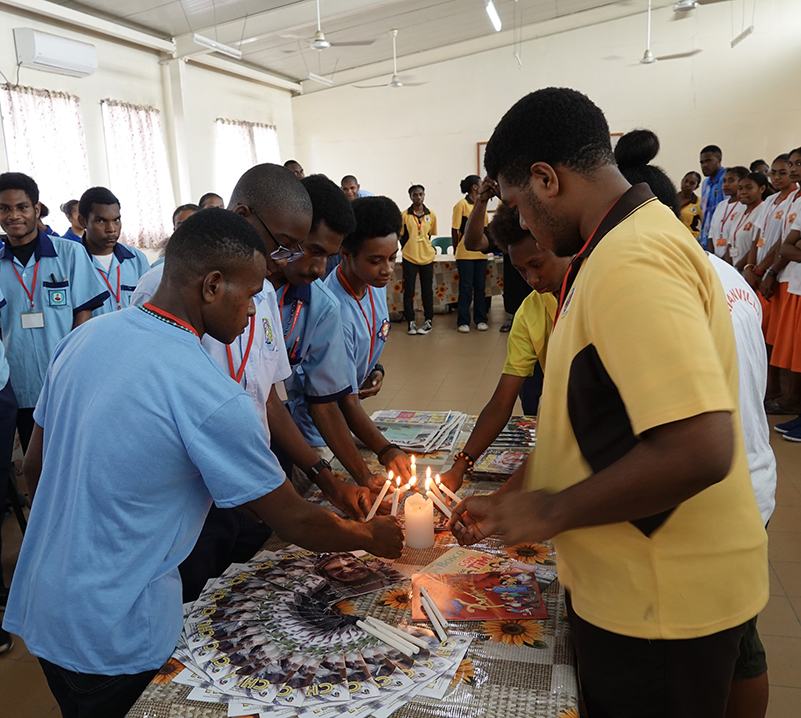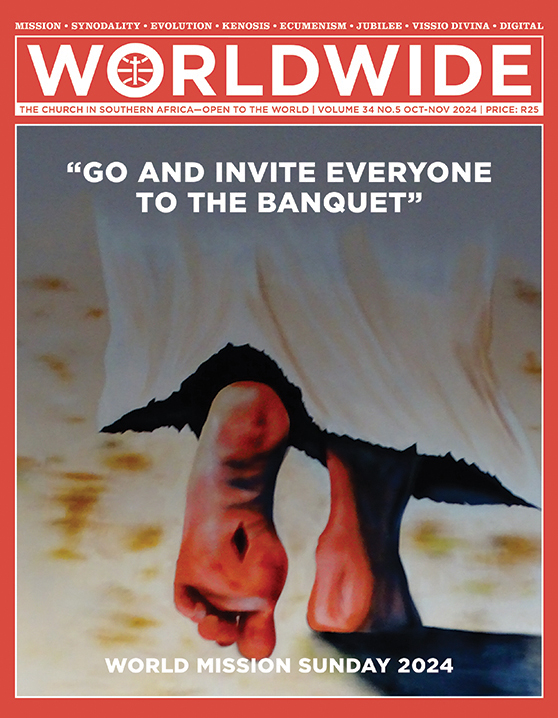
“GO AND INVITE EVERYONE TO THE BANQUET”
The image represents the feet of the Risen Jesus, in motion, showing the wounds of his Passion, yet ready to reach out and invite all to the banquet of his mercy. Likewise, Jesus invites to us to his mission in co-responsibility to bear witness to the power of his resurrection and to bring Jesus’ message of peace and fraternity to the whole world.
FRONTIERS • MYSTICAL EXPERIENCE IN ART
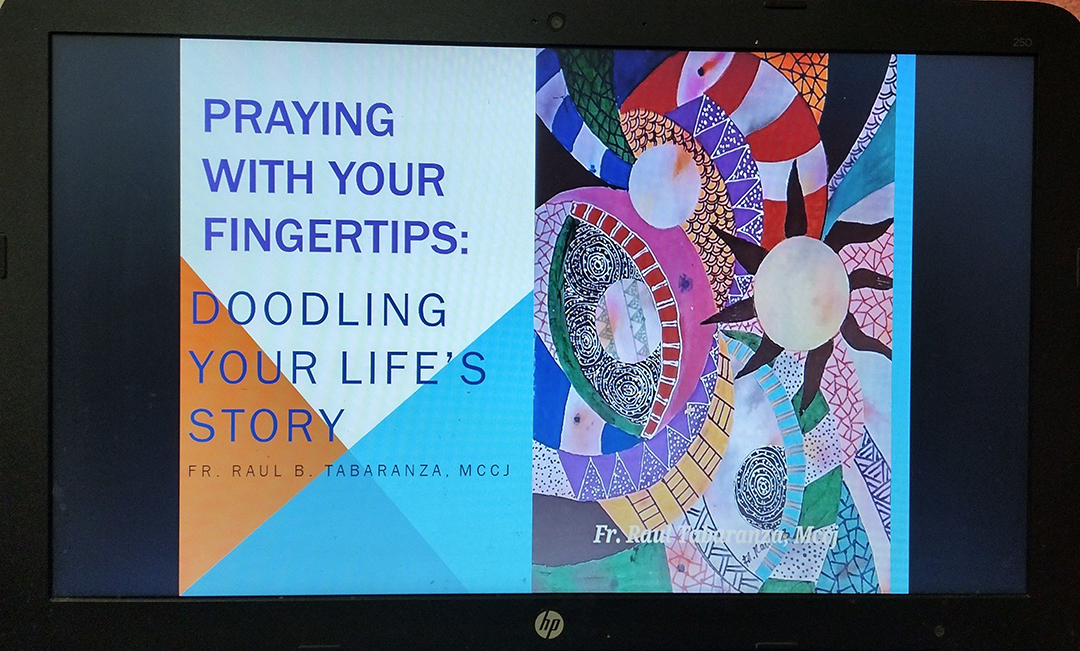
PRAYING WITH YOUR FINGERTIPS THROUGH VISIO DIVINA
As a way of reviving the use of art in prayer, the author, a Comboni Missionary from the Philippines, explores the method of Visio Divina and invites the reader to enter into a contemplative experience through it.
BY FR RAUL TABARANZA, MCCJ
PRAYER IS an act of invocation, of asking for help and support; an appeal to God, communicating with Him for guidance and protection. Prayer can also be an exercise of thanksgiving, an expression of joy and gratitude. It also seeks rapport and connection with God. Contemplative prayer has been seen as the highest form of prayer, resting quietly with God, in complete silence, using minds and hearts, and even imagination, to achieve communion with God.
Lectio and Visio Divina
Lectio Divina, commonly known as “divine reading,” “holy reading,” or “spiritual reading,” was one of the famous forms of prayer in the first centuries. In the early 6th century, Benedict of Nursia formalized the practice of Lectio Divina. It is a contemplative means of praying with Scripture in order to promote closeness and communion with God. Lectio Divina is also a spiritual exercise, attempting to gain insights into a Sacred text or into a phrase or word in it which touches the soul of the one who is praying; most importantly, through Lectio Divina we invite the Holy Spirit to lead us to a deeper understanding of the Word of God in our personal life.
From Lectio Divina comes Visio Divina, commonly known as “divine seeing” or “holy seeing,” which runs parallel to Lectio Divina, but in this form of prayer we use a piece of art, an icon, or other spiritual-visual creation as a tool of contemplation and as a means of deepening our prayer and appreciation of God’s presence in our lives. We use art as a bridge to enhance our connection with God. We also create art as an expression of prayer; paintings can transform our prayers into a personal dialogue with the Lord.
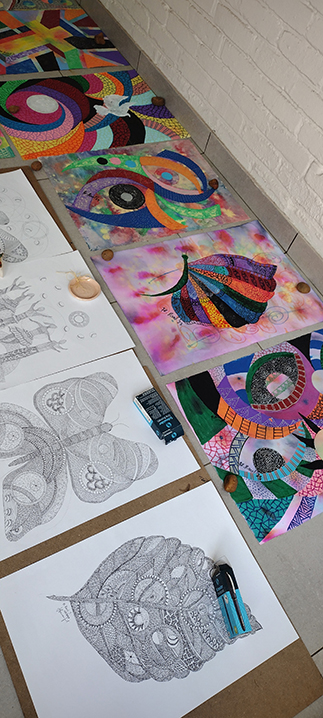
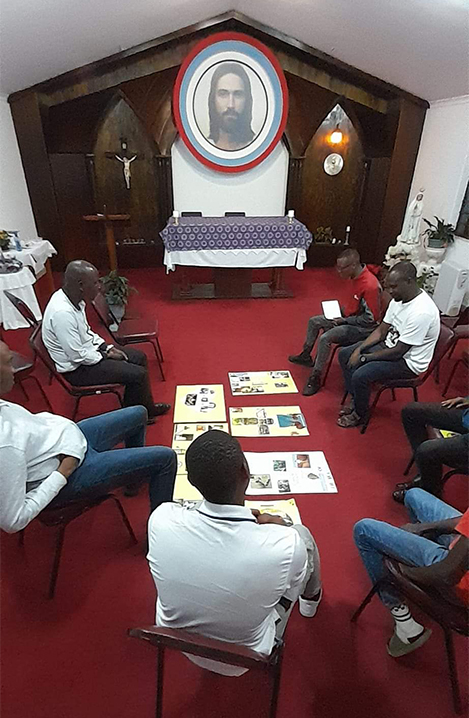
Discovering Oneself
I usually offer two workshops to our Comboni aspirants annually; the second one of these two starts with Visio Divina, “Praying with your Fingertips: Painting your Vocation Story.” We all have a lens through which we see the world, and for me, this has always been art. Creativity is a gift from God, and painting or any other form of art is a sacred space, where our silent prayers have visual forms. I encourage participants to lace together in prayer their faith elements, and materials such as pens, pencils, paints, brushes, canvas, candles, leaves, branches, as well as many others which are used for this purpose.
Praying and painting in silence makes you sensitive even to the small details of life.
I have learned that sometimes the best prayers are not built out of words but out of textures, colors, scents, or voices. They are gentle reminders of dreams, of deep affections, interconnections, love, and life. The aspirants always enjoy Visio Divina, not only because this experience is their first of painting in this manner, but also because it is an exercise of finding the source of their vocation through visual forms.
I presented the same workshop to a group of sisters, and it took them a full day to finish their first session. They discovered many meanings and symbols in their pieces of art, and they were deeply engrossed in their sharing and interpretations. Painting surpasses words; it has the power to transcend, rendering us able to express ourselves even outside our cultural, personal, and even emotional boundaries. Praying and painting in silence makes you sensitive even to the small details of life. Thomas Merton used photography as he used words, to explore silence. “He worked for photographic images, which when viewed without haste or pressure, might accomplish the slow work of communicating a ‘hidden wholeness,’ and perhaps reveal some hidden hint of that wordless gentleness that flows out from the unseen roots of all created being.” (Esther De Waal, 1992: 35). Photography, and I would add ‘art,’ became for him a form of meditation.
Finding God through Art
Painting your prayers allows the Holy Spirit to work wonders in your piece of art, as if He is there guiding your hand or whispering to you as you work. There is a mystery, somehow a mystical experience, in how colors blend, how the strokes give beauty to your work, and how shapes are formed without you knowing it. If there is that awareness of how powerful art is, then, God as a transcendental reality stays with you in the process. I personally am more of an abstract artist; I always feel free to create any shape or form without overthinking its curves and lines. When the work is done, I realize that it, in fact, conveys beauty and meaning. When prayer is completely transloaded onto canvas, new strength is found, and one becomes more confident with every piece of work which has been taken on. In Visio Divina, when integrating art into prayer, we become more appreciative of the sense of sight and imagination, especially in our relationship with God.
Visio Divina has already been present for a long time; it merely was not given a proper name. This has only emerged in the last few decades. People much longer ago did not always have the privilege of a higher education (‘no read-no write’ expression), so the best way to convey messages and prayers was through artistic expression. Early Christians learned how to pray through art seen on the church’s walls and ceilings. Our modern world today is fully absorbed in technology, gadgets, cell phones, and artificial intelligence, and we have begun to underestimate art as a powerful tool with which to encounter the Divine.
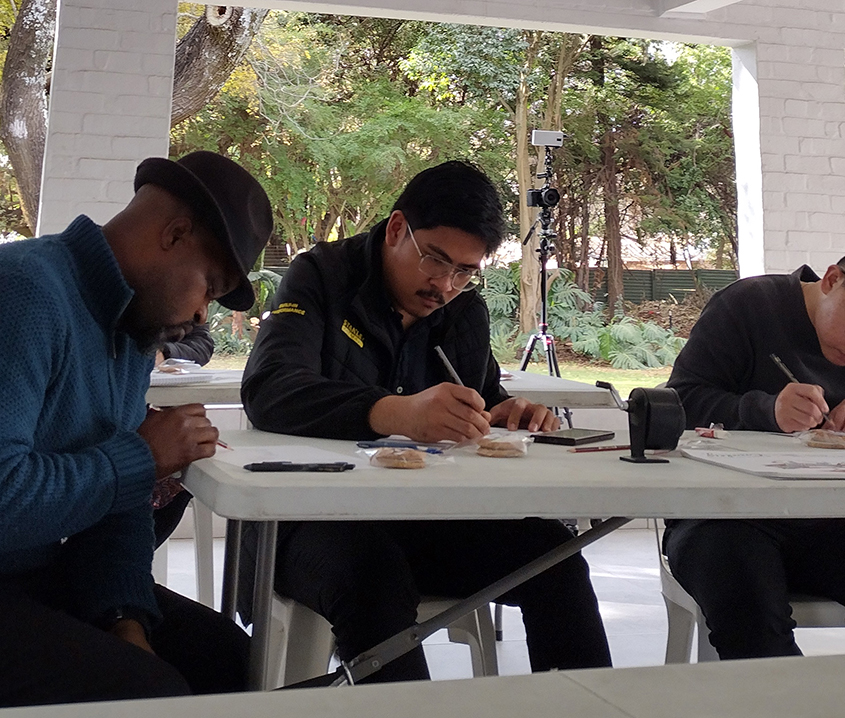
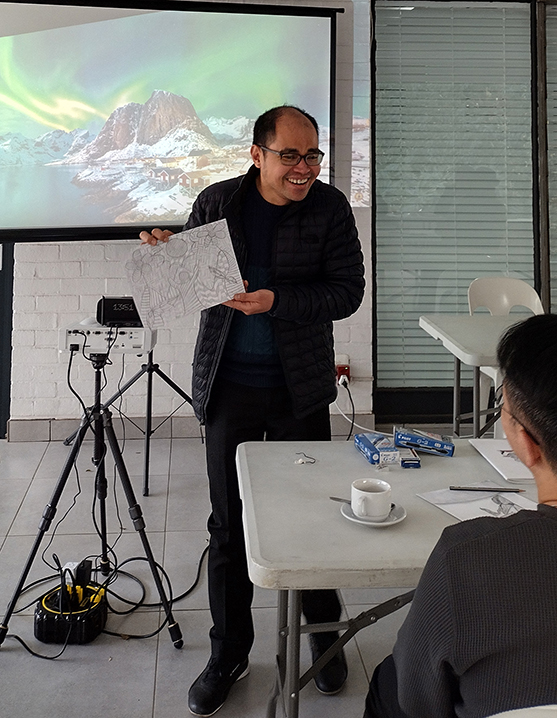
Visio Divina, through sacred art, is also a powerful opportunity for our younger generations to meet God in prayer. Who are these younger generations? They are called the Gen Z, “those who were born between 1995 and 2012, meaning the oldest are starting their careers, and the youngest are in middle of school, and the ‘Gen Alphas,’ whose birthdays range from 2013 to 2025, meaning the newest generation members haven’t even been born yet” (information extracted from Google).
Visio Divina is a powerful tool to lead our young people to a deeper encounter with the beauty of God’s love.
It is said that because of the advancement of technology, many individuals from these generations appear to be disengaged with faith. We need to reclaim that and to guide them back into the Church. Visio Divina is a powerful tool to lead our young people to a deeper encounter with the beauty of God’s love. Our culture is becoming increasingly visually oriented; praying with fingertips and with images is therefore essential and will provide our young people with a more contemplative space. Visio Divina, being contemplative prayer, is for everyone.
Experiencing Visio Divina
There is a “marriage” between art and spirituality in Visio Divina; and this special union, if put into visual form, enhances a meditative and powerful prayer experience. It strengthens our connection with God, allowing us a mystical experience of the divine. Take a few minutes appreciating a piece of art, sit down and gradually enter into it, be attentive to the details and expressions, and place yourself into the image. Meditate, be more attentive, relate it to other instances or to your personal experiences. Pray about it, and share with God the feelings that emerge; also listen attentively to what God is saying to you. Remain with God in this special space and enjoy His presence. As you return to yourself, ask God how to put into action the fruits of your contemplation.
If you make Visio Divina a habit, you will encounter the beauty of sacred art fuller, and will grow deeper and deeper in your relationship with God; and without realizing it, you will become His piece of art.

